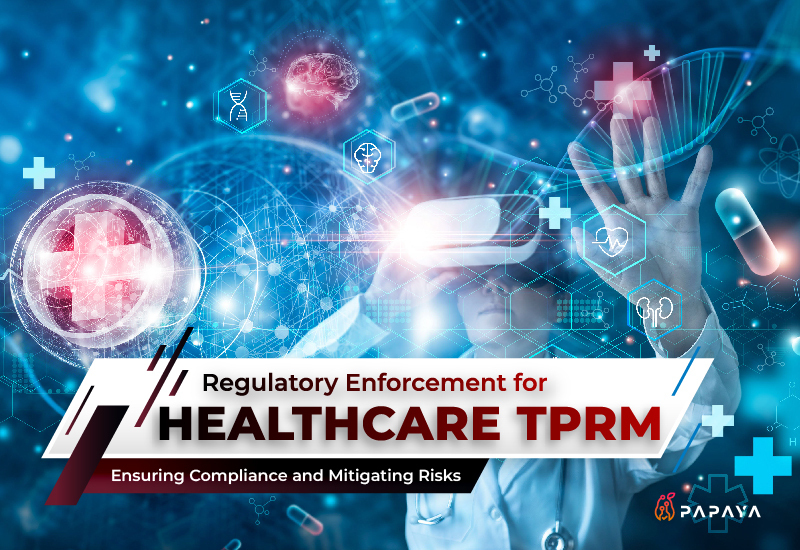
Third-Party Risk Management (TPRM) in healthcare isn’t just a regulatory requirement; it’s a crucial defense against data breaches and cyber threats. With vendors having access to sensitive patient data, TPRM ensures compliance with regulations like HIPAA, GDPR, and CCPA. The recent surge in regulatory enforcement, highlighted by significant fines and legal actions, underscores the importance of robust TPRM practices.
The Regulatory Landscape in Healthcare TPRM
HIPAA: The Foundation of Patient Data Protection
The Health Insurance Portability and Accountability Act (HIPAA) is central to TPRM, requiring healthcare entities to protect patient health information (PHI). This involves implementing safeguards like risk assessments, encryption, and two-factor authentication.
Broader Regulatory Framework
Apart from HIPAA, healthcare organizations must navigate a myriad of federal and state laws. These include the HITECH Act for electronic health records, 21 CFR Part 11 for clinical trials, and state-specific laws like California’s CCPA. Each law adds a layer of complexity to TPRM, demanding comprehensive compliance strategies.
The Role of SOC 2 in Healthcare TPRM
SOC 2 compliance is also critical in healthcare TPRM. It provides a standardized framework to evaluate vendors’ controls over PHI, ensuring compliance with broader regulations.
Challenges and Best Practices in Healthcare TPRM
Navigating Complex Supply Chains
The healthcare industry’s fragmented supply chain poses significant risks. Each vendor potentially accesses sensitive data, making it challenging to manage security risks effectively.
Balancing Privacy, Security, and Compliance
Continuous monitoring of third-party vendors is essential for ensuring compliance with PHI privacy and security regulations. Regular risk assessments, audits, and adherence to compliance standards are key to maintaining the integrity of patient data.
Best Practices for Risk Mitigation
Effective TPRM involves thorough risk assessments of vendors, robust security controls, and regular monitoring. Implementing these practices helps in identifying and mitigating potential vulnerabilities.
Technology’s Role in Strengthening TPRM
Automation and data analytics are powerful tools in TPRM. They enhance efficiency in compliance processes and provide insightful data for risk identification and mitigation.
The High Stakes of Non-Compliance
Non-compliance can lead to severe consequences:
- Financial penalties for HIPAA violations can reach up to $1.5 million per year for identical breaches.
- IBM reports the average cost of a healthcare data breach at $7.13 million, the highest across industries.
- Legal and reputational damage, exemplified by a $115 million settlement after a major health insurance breach.
- Patient safety risks, including misdiagnoses or treatment delays due to compromised data.
The Future of Regulatory Enforcement in Healthcare TPRM
The landscape of regulatory enforcement is evolving. Expect stronger enforcement powers, a shift towards risk management-based compliance, increased accountability for data stewardship, and an emphasis on ESG factors in vendor selection.
The Path to Robust TPRM in Healthcare
Healthcare organizations must proactively manage third-party risks to avoid non-compliance and protect patient data. Continuous education, monitoring, and adapting to regulatory changes are vital. Papaya Technologies offers expert guidance and a purpose built platform aimed to help you navigate the complexities of TPRM in healthcare.

